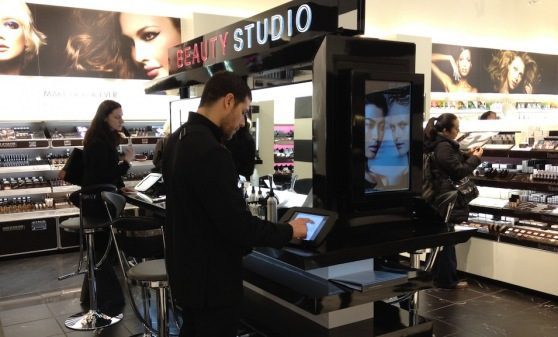Today’s shoppers are seeking experiences and relationships when they shop, and they want the experience to be consistent across all touch points. Yet 58% say that online shopping lacks the service that can be offered in a brick-and-mortar store. With that in mind, retailers have tremendous opportunities to implement innovative, customer-focused, contextual service offerings — either based in the store or delivered to the customer’s home via a field force, such as Best Buy’s Geek Squad.
But to make these offerings work, today’s merchants should consider the trends shaping the modern service economy:
-
The economy has moved from scarcity to abundance;
-
Relevant and contextual services are the key to driving engagement and loyalty; and
-
Testing new experiences and store models on a small scale can help expedite successful full-scale implementations.
Retailers can take their cues from companies including Best Buy, Ulta Beauty, Sephora and Nike, which have introduced cutting-edge services within their physical stores to augment the value of their merchandise.
As Product Offerings Become All Too Similar, Services Will Stand Out
The intense growth of e-Commerce retailing over the past decade, and the growing number of merchants selling similar merchandise, has made it easier for shoppers to purchase the items they are seeking at any time and at the best price. Therefore, retailers now have to go the extra mile to differentiate their offerings, especially since Amazon and Walmart are likely to carry the same products at a lower price.
“We’ve moved from a time when the economy was based around scarcity, when consumers had difficulty finding certain products and certain brands, to a time of abundance,” said Doug Stephens, Founder of Retail Prophet, a retail advisory service. “Anything and everything we could ever want is two clicks away.”
Today’s shoppers simply prefer “experiences over things.” With the knowledge that consumers are spending more on entertainment, food and drink, and travel, retailers should work to differentiate their brands by ramping up service and experience offerings. Instead of focusing directly on the sale of a specific product, retailers can build out services that add value and differentiate the brand from the competition.
Best Buy Powers The Brand With Geek Squad Service
While IoT “connected home” offerings have become a growing category for several technology and electronics retailers, no merchant has integrated the services into stores as effectively as Best Buy. So what sets the Best Buy offering apart? Not the IoT technology itself, but the retailer’s tech support and installation group, the Geek Squad.
With most consumers still viewing IoT devices as a nascent technology, many are likely to need assistance getting up to speed when they purchase the products for their home. Geek Squad members can help consumers make an informed purchase within the store, but also can travel to the shopper’s house to install the device.
“A quick scan of YouTube will reveal all of the frustrated consumers trying to make IoT work in their homes,” saidChris Petersen, President of Integrated Marketing Solutions in a RetailWire discussion. “At this point in time, it is NOT easy! Set up a single device? Maybe. Connected home? NO! So who you going to call?”
Ulta And Sephora Turn Makeovers Into Educational Services
While brands such as Best Buy rely on a field force to enhance the customer experience, top beauty brands offer services in-store to help customers get educated about the products (which also helps to ramp up sales). Ulta Beauty and Sephora both book makeover and stylist appointments at their stores, and Sephora also hosts its own beauty classes. During the classes, an instructor teaches shoppers skin care basics and the latest makeup trends.
“I’m such an advocate for everything Sephora does, because not only are they hosting these in-store makeup classes, but they have great technology in their stores,” said Laura Sossong, Manager of Boston Retail Partners. “They have an engine where you can select your skin type and identify what issues you are facing, such as how dry or oily your skin is. It will recommend products based on that.”
Similar to top beauty retailers, craft stores such as Michaels and JoAnn Fabric & Craft hold frequent classes both in-store and online, educating customers about crafts and hobbies such as jewelry making, knitting and crocheting, cake decorating, painting and drawing.
Nike Complements Gear Purchases With Free Fitting Services
Although retailers within the electronics, beauty and crafts sectors all have plenty of services that are compatible with their product offerings, athletics retailers have perhaps some of the biggest opportunities to deliver product-related services.
Nike, one of the best known global athletic wear brands, offers numerous free services such as running analysis, bra fitting and pants hemming in select California stores.
“In addition to actually improving the customer experience, they’re incentivizing people to buy,” said Francesca Nicasio, Content Strategist and Retail Analyst at Vend. “If [consumers] buy from the store, they can take advantage of the complementary services, which is one more aspect retailers need to keep in mind when looking to attract consumers to the stores.”
Relevance, Context Drive True Value Of Retail Services
Regardless of the type of products the retailer offers, services must align with the company’s mission in order to be relevant. Creating services that actually resonate with consumers is a critical component of ensuring that engagement and loyalty thrives beyond the first store interaction.
“Retailers really need to understand what their customer base needs are, so that they can design a solution based on those needs,” said Hana Ben-Shabat, a partner in the retail practice of A.T. Kearney, a global strategy and management consulting firm. “Don’t just inject services for the sake of injecting services. You have to ask, ‘What am I trying to create with this service?’ If you just provide an experience that isn’t going to drive a purchase, then the service is not going to help you.”
In today’s data-driven retail environment, brands can no longer plausibly claim they don’t understand their customers’ behavior. With a plethora of business intelligence tools and predictive analytics platforms available, more big brands (especially department stores) need to leverage and analyze prior consumer interactions to identify which products they purchase most often, which promotions have been the most successful, and how long shoppers stay in the store.
“The core of this and why these measures have been so successful is that they’re actually listening to their target,” Sossong said in an interview with Retail TouchPoints. “Retail’s a tough business, but you have to give the customer what they want. We’re seeing these big department stores struggle with this, but they’re trying to maintain their same models. There is nothing real-time about walking into many of these stores. The way that these stores are set up, for instance, makes it really challenging and confusing, with many laid out the same way they were in the 1970s and 1980s when shopping malls were everything. Now it’s all about the individual customer experience.”
C-Level Execs: Join The Services Economy!
Retailers seeking to offer service-focused experiences need to have a change-oriented culture already built in, from the executive team to the store. It’s critical for top-tier executives to appreciate the value of change within a retail organization, whether these changes consist of in-store merchandising modifications or budgeting priority shifts.
If there is no real C-level buy-in, adding services — whether that involves something as simple as structuring a class schedule or as complex as implementing different technologies within the store — can still take months, or even years, to implement. Such delays can significantly dull a retailer’s competitive edge.
“The whole culture and every single decision you make within retail is driven by your C-level executives,” Sossong stated. “Every Monday you’re held accountable to your C-level managers, and they’re setting the direction and the tone. I think now more than ever, it’s critical for the C-level executive to really be setting that tone of innovation, looking at the retailers that are making it happen and realizing that to a certain extent they have to follow suit. You can’t just do things the way you’ve always done them.”
It’s Okay To Smart Small
To identify the best services for a specific brand in a cost-effective manner, testing is key.
“It’s really about testing a concept,” Ben-Shabat of A.T. Kearney said in an interview with Retail TouchPoints. “Many retailers are now building new concept stores. They do one of them and then they see how it works before they officially roll out the concepts. That’s the best way to protect investments and not waste money; to prioritize and silo them and learn and adjust before you have a massive rollout, especially for retailers that have a very large footprint.”
Stephens of Retail Prophet suggested that even the biggest brands can benefit from transforming a portion of one of their stores, to test how future locations may implement services.
“I often wonder why Macy’s doesn’t take 25% of a store and try something wildly different, innovative and unique,” Stephens said. “It doesn’t need to be every store in the country, just take one store and experiment. But it’s a lot of inertia that they’re trying to break.”
Upon first glance, creating and implementing services can be daunting for a retailer that hasn’t trialed the strategy in the past. But with store traffic continuing to fall, it’s clear that products can’t be the only selling point for a brick-and-mortar retailer.
With shoppers adjusting their own preferences to focus on experiences, while still buying goods from a bevy of retailers either online or in the store, merchants simply have to stand out with services that are both relevant and contextual.
“With the rise of Amazon and all these price check apps, a lot of retailers are realizing they just can’t compete on price or product anymore,” said Nicasio of Vend. “When they think about improving the retail experience, I believe offering these services will cross their minds, and that we will see more of it going forward.”













